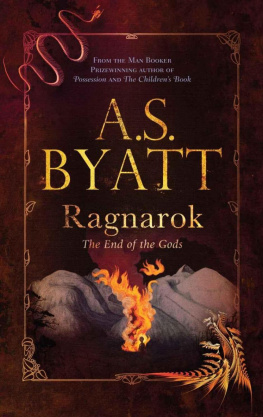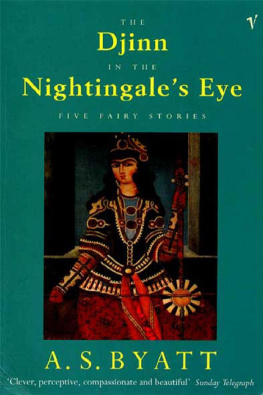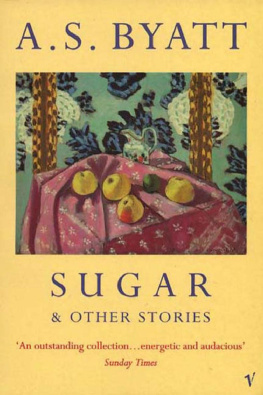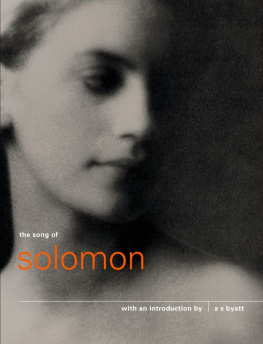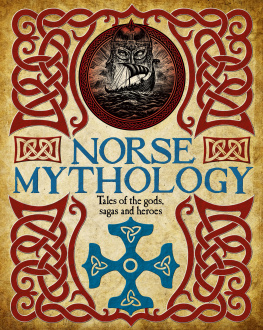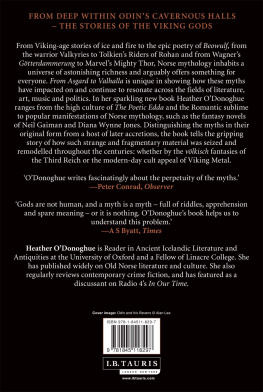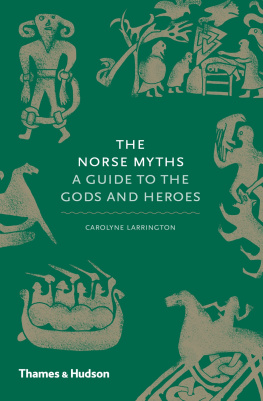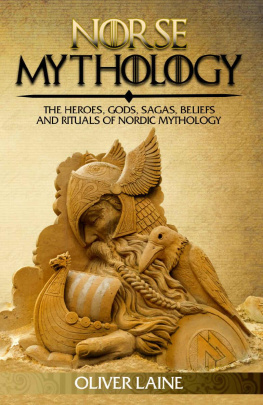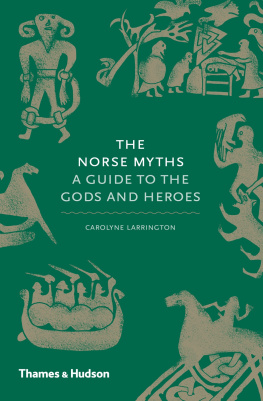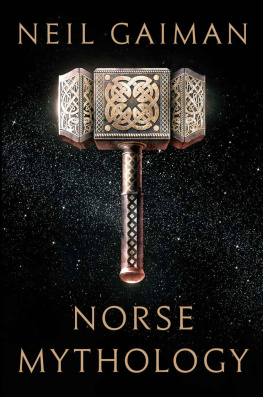Also by A.S. Byatt
Fiction
The Shadow of the Sun
The Game
The Virgin in the Garden
Still Life
Sugar and Other Stories
Possession: A Romance
Angels and Insects
The Matisse Stories
The Djinn in the Nightingales Eye
Babel Tower
Elementals
The Biographers Tale
A Whistling Woman
Little Black Book of Stories
The Childrens Book
Criticism
Degrees of Freedom: The Novels of Iris Murdoch
Unruly Times: Wordsworth and Coleridge in their Time
Passions of the Mind: Selected Writings
Imagining Characters (with Igns Sodr)
On Histories and Stories: Selected Essays
Portraits in Fiction
Memory: An Anthology (edited with Harriet Harvey Wood)
RAGNARK
The End of the Gods
A.S. Byatt
First published in Great Britain in 2011 by Canongate Books Ltd,
14 High Street, Edinburgh EH1 1TE
This digital edition first published by Canongate in 2011
Copyright A.S. Byatt, 2011
The moral right of the author has been asserted
British Library Cataloguing-in-Publication Data
A catalogue record for this book is available on
request from the British Library
ISBN 978 1 84767 064 9
Export ISBN 978 1 84767 843 0
eISBN 978 1 84767 965 9
Typeset in Van Dijck by Palimpsest Book Production Ltd,
Falkirk, Stirlingshire
www.canongate.tv
Join the discussion:

#ragnarokbyatt
Table of Contents
For my mother,
K.M. Drabble,
Who gave me Asgard and the Gods.
A Note on Names
This story has been made from many stories in many languages Icelandic, German and others. The names of the persons in the myth vary from telling to telling. Iduna is the same person as Idun. There are many ways of spelling Jrmungandr or Jrmungander. I feel happier using various spellings, rather than trying to achieve an artificial consistency. Myths change in the mind depending on the telling there is no overall correct version.

WODANS WILD HUNT
A THIN CHILD IN WARTIME
There was a thin child, who was three years old when the world war began. She could remember, though barely, the time before wartime when, as her mother frequently told her, there was honey and cream and eggs in plenty. She was a thin, sickly, bony child, like an eft, with fine hair like sunlit smoke. Her elders told her not to do this, to avoid that, because there was a war on. Life was a state in which a war was on. Nevertheless, by a paradoxical fate, the child may only have lived because her people left the sulphurous air of a steel city, full of smoking chimneys, for a country town, of no interest to enemy bombers. She grew up in the ordinary paradise of the English countryside. When she was five she walked to school, two miles, across meadows covered with cowslips, buttercups, daisies, vetch, rimmed by hedges full of blossom and then berries, blackthorn, hawthorn, dog-roses, the odd ash tree with its sooty buds. Her mother, when they appeared, always said black as ash-buds in the front of March. Her mothers fate too was paradoxical. Because there was a war on, it was legally possible for her to live in the mind, to teach bright boys, which before the war had been forbidden to married women. The thin child learned to read very early. Her mother was more real, and kinder, when it was a question of grouped letters on the page. Her father was away. He was in the air, in the war, in Africa, in Greece, in Rome, in a world that only existed in books. She remembered him. He had red-gold hair and clear blue eyes, like a god.
The thin child knew, and did not know that she knew, that her elders lived in provisional fear of imminent destruction. They faced the end of the world they knew. The English country world did not end, as many others did, was not overrun, nor battered into mud by armies. But fear was steady, even if no one talked to the thin child about it. In her soul she knew her bright father would not come back. At the end of every year the family sipped cider and toasted his safe return. The thin child felt a despair she did not know she felt.

THE ASH, YGGDRASIL
THE END OF THE WORLD
The Beginning
The thin child thought less (or so it now seems) of where she herself came from, and more about that old question, why is there something rather than nothing? She devoured stories with rapacious greed, ranks of black marks on white, sorting themselves into mountains and trees, stars, moons and suns, dragons, dwarfs, and forests containing wolves, foxes and the dark. She told her own tales as she walked through the fields, tales of wild riders and deep meres, of kindly creatures and evil hags.
At some point, when she was a little older, she discovered Asgard and the Gods. This was a solid volume, bound in green, with an intriguing, rushing image on the cover, of Odins Wild Hunt on horseback tearing through a clouded sky amid jagged bolts of lightning, watched, from the entrance to a dark underground cavern, by a dwarf in a cap, looking alarmed. The book was full of immensely detailed, mysterious steel engravings of wolves and wild waters, apparitions and floating women. It was an academic book, and had in fact been used by her mother as a crib for exams in Old Icelandic and Ancient Norse. It was, however, German. It was adapted from the work of Dr W. Wgner. The thin child was given to reading books from cover to cover. She read the introduction, about the retrieval of the old Germanic world, with its secrets and wonders... She was puzzled by the idea of the Germans. She had dreams that there were Germans under her bed, who, having cast her parents into a green pit in a dark wood, were sawing down the legs of her bed to reach her and destroy her. Who were these old Germans, as opposed to the ones overhead, now dealing death out of the night sky?
The book also said that these stories belonged to Nordic peoples, Norwegians, Danes and Icelanders. The thin child was, in England, a northerner. The family came from land invaded and settled by Vikings. These were her stories. The book became a passion.
Much of her reading was done late at night, with a concealed torch under the bedclothes, or with the volume pushed past a slit-opening of the bedroom door into a pool of bleak light on the blacked-out landing. The other book she read and reread, repeatedly, was John Bunyans Pilgrims Progress. She felt in her bones the crippling burden born by the Man mired in the Slough of Despond, she followed his travels through wilderness and the Valley of the Shadow, his encounters with Giant Despair and the fiend Apollyon. Bunyans tale had a clear message and meaning. Not so, Asgard and the Gods. That book was an account of a mystery, of how a world came together, was filled with magical and powerful beings, and then came to an end. A real End. The end.
One of the illustrations showed Rocks in the Riesengebirge. A river ran through a cleft, above which towered tall lumps of rock with featureless almost-heads, and stumps of almost-arms, standing amongst thrusting columns with no resemblance to any living form. Grey spiked forest tips clothed one slope. Tiny, ant-like, almost invisible humans stared upwards from the near shore. Wraiths of cloud-veils hung between the forms and the reading child. She read:

